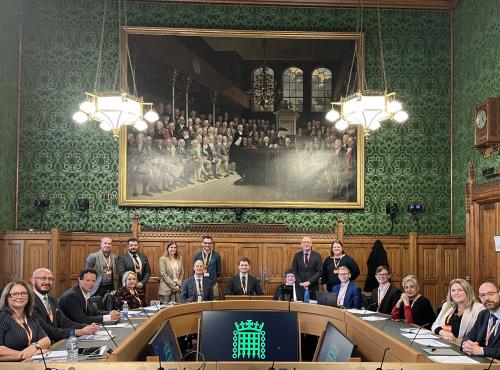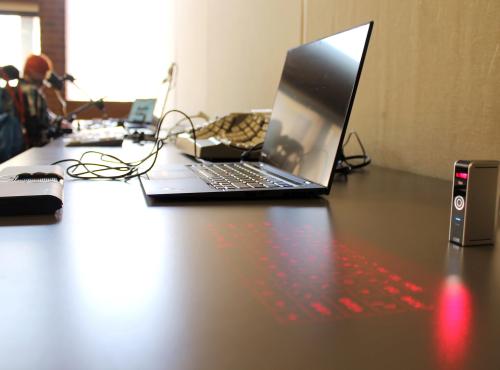The National Disability Strategy: tech is the opportunity, collaboration its realisation.
The Government has committed to exploring the case for a new Centre for Assistive and Accessible Technology. This idea was born from collaboration - its success depends on deepening that partnership.
Today the Government published its National Disability Strategy. Their aim in the strategy is to unlock opportunity and improve disabled peoples’ lives through initiatives and reforms across all areas of government - from transport, to jobs, to the courts, and more.
These are long-standing challenges but there are also new opportunities before us: one that stands out is the development and wide availability of smart technology. When we get it right, technology can be used to remove barriers and increase opportunity for disabled people - and bring the benefits of accessibility to all. I’m severely dyslexic myself and wouldn’t have attempted to write this article without the use of both everyday tools like spellcheck and more specialised literacy software. The mainstreaming of digital technology can create a platform, allowing each user to personalise tools to suit their own accessibility needs.
It’s clear from the National Disability Strategy that policymakers are ready to grasp the tech opportunity with both hands. Look across the strategy, and technology is a key factor in plans for innovation, employment, services and more. The flagship announcement is to explore the case for “A world-leading Centre for Assistive and Accessible Technology”, and so I'd like to share some background on the development of this idea, and where we can go from here.
Collaborating to develop policy ideas
Policy Connect came to the Strategy process with a focus on technology: my team has been working in the area since 2017, and I chair a number of advisory groups for government departments on assistive technology and digital inclusion. As a cross-party collaborative think-tank, we were pleased to establish a partnership with the Disability Unit at the Cabinet Office to develop policy with stakeholders from the disability sector, focusing on the opportunity around digital tech.
Over summer and autumn of 2020, Policy Connect delivered three tech policy workshops jointly with the Disability Unit. The sessions were interactive and informed by Policy Lab principles, bringing together participants from disability organisations and charities (Disability Rights UK, Scope, Leonard Cheshire Disability), the tech sector (e.g. British Assistive Technology Association, Microsoft), government (e.g. DfE, DCMS, DWP, NHSX, GDS), not-for-profits and academia (e.g. AbilityNet, Jisc, Ace Centre, GDI Hub), and more. Importantly, disabled people and assistive technology users were not only represented among the participants from disability groups, but across all the sectors.
The workshop’s first task was to define what’s wrong with the status quo on assistive and accessible technology. Do we just want more technology, in some sense, or better, or cheaper - or what? The group’s conclusion was ultimately an optimistic one: the problem is that we have yet to take full advantage of the potential of technology to remove barriers, increase opportunity for disabled people and bring the benefits of accessibility to all. Within that, there are an array of interwoven factors from issues with product design, to commissioning of services, to getting the right support to use the technology - the last factor stood out, as several participants stressed that ‘it’s about people, not [just] kit’. The discussion also concluded that, as a result of the issues identified, gaps appear between services - and this places too much of the responsibility on disabled people themselves to navigate and manage these fault lines. We can already see the seeds of the Centre in this ‘problem statement’ - but I’ll come on to that.
The workshop participants also co-created a fantastic map of all the current areas of policy where technology is - or could be - used to benefit disabled people. Some entries were obvious, such as the SEND Code of Practice, while others like the forthcoming tech trade strategy were less expected. The mapping exercise was a spring-board to the second phase of the workshop: developing and assessing proposals. Consulting the ‘policy map’, and careful not to reinvent what’s working well already, participants shared ideas for new initiatives and reforms.
Eleven ideas were presented at the second workshop, from ideas on innovation, to a technology ‘passport’, to new digital regulations. The first test was obvious: does the proposal help tackle the problem we’d identified? Second, participants gave scores to each idea, on criteria such as the level of ambition. We wanted bold new thinking more than tweaks. These lively discussions showed the value of bringing Government and stakeholders together at the start of policy development when ideas are just ideas, not yet government proposals or the sector’s campaigning objectives.
Collaborating for solutions
The idea for a Centre for Assistive and Accessible Technology came out on top, both in the workshop scoring and also when we took workshop papers to senior officials in the Cabinet Office. It’s hardly surprising, as it was built out of reflection on the problem statement all participants had co-developed: the Centre is able to drive the AT agenda across service and sectoral boundaries; it can therefore leverage scale to target the issues of design, access and support in a holistic way.
Nonetheless, we took the proposal back to the workshop group for more challenge and debated different models for how the Centre could function. It was important to make sure that the disabled people and other stakeholders who took part in the ideas development workshops continued to shape the proposals as they developed. These discussions are reflected in the Strategy as it notes that the Centre could include functions such as supporting local services, piloting and helping to scale new models, and improving awareness and support around technology. Yet as the strategy explains: “The aims of the Centre will be developed further over the coming months in dialogue with disabled people, business and the public sector”. The publication of the strategy offers the opportunity to forge a wider and deeper partnership with disabled people to make the Centre a true co-production.
I hope that by sharing how the Centre was born from creative collaboration, I can strengthen the case for pursuing and extending that approach in its development over the next year. I look forward to working with disabled people and all stakeholders, with the Disability Unit, to explore how we can make the proposed Centre a success. I’ve seen and experienced how technology can transform disabled people’s lives - it’s a prize we can’t afford to miss.


